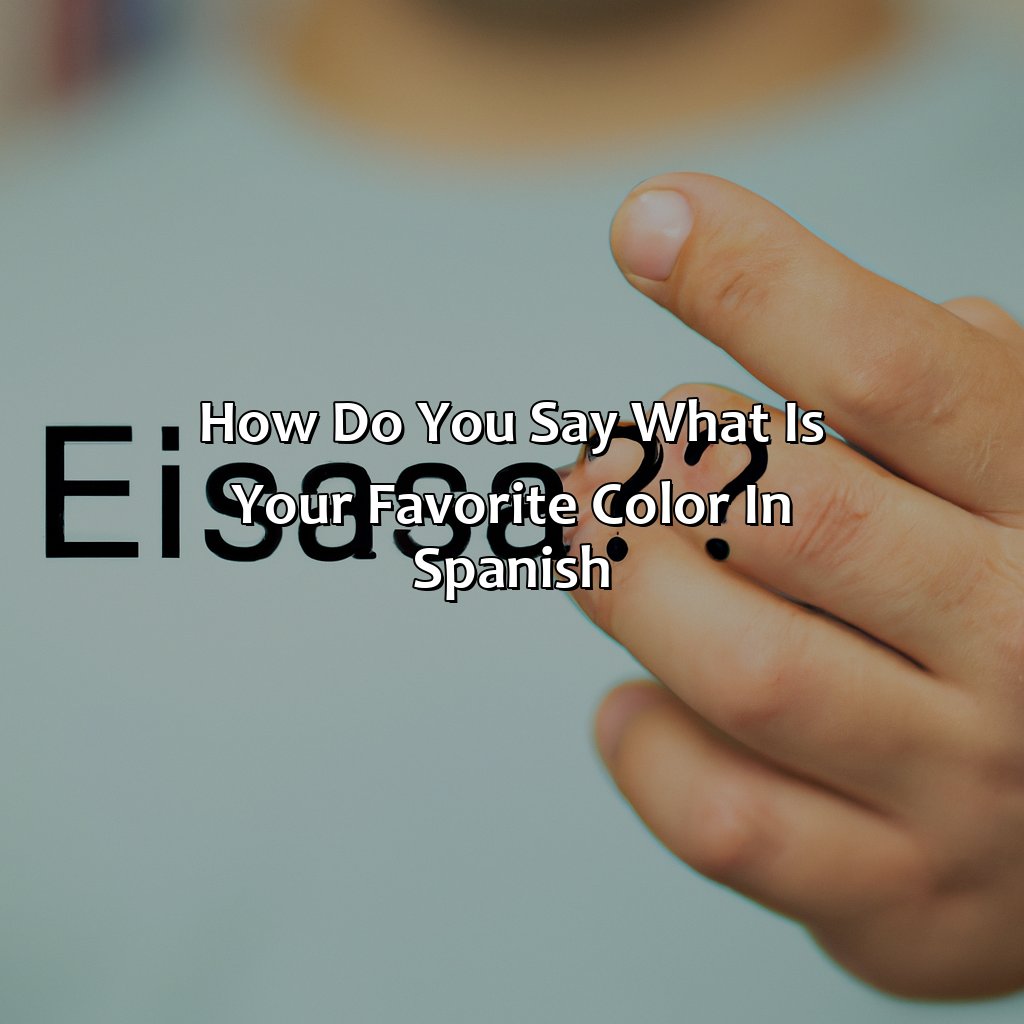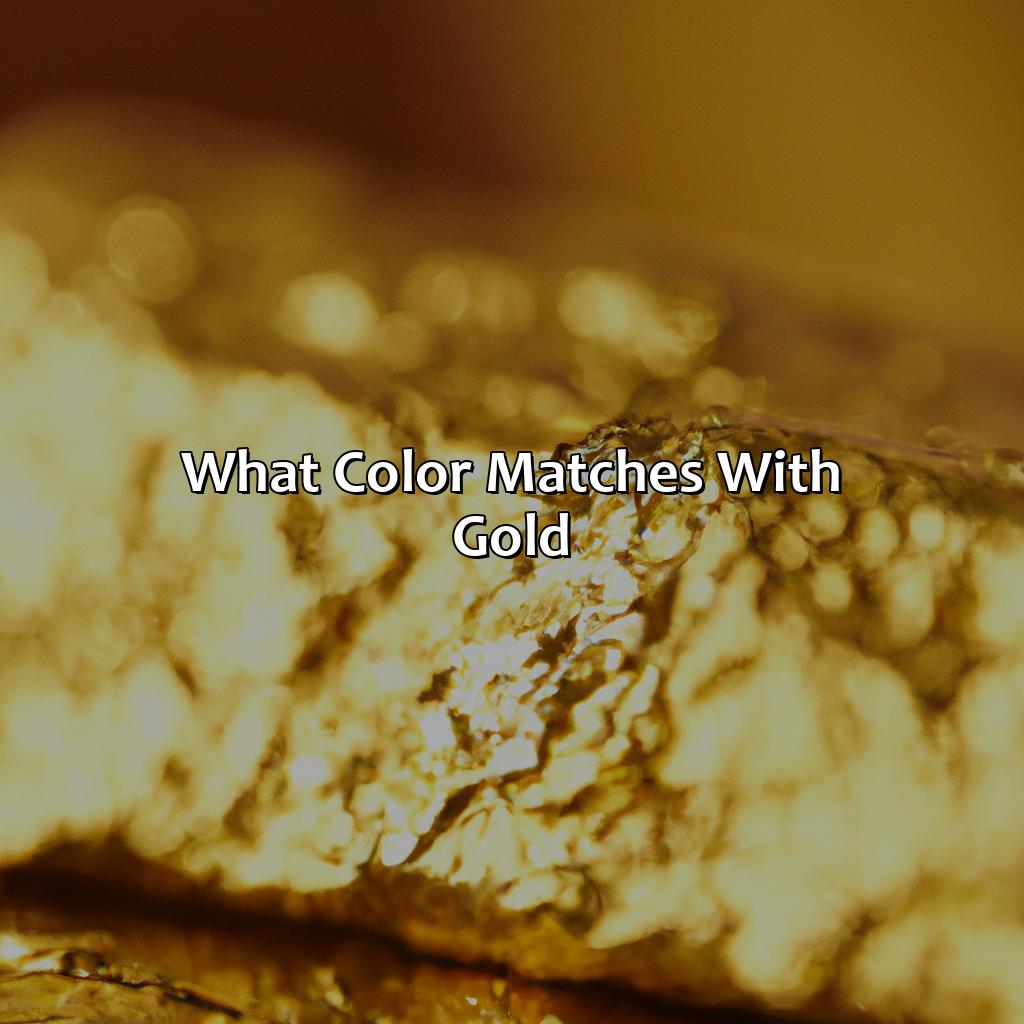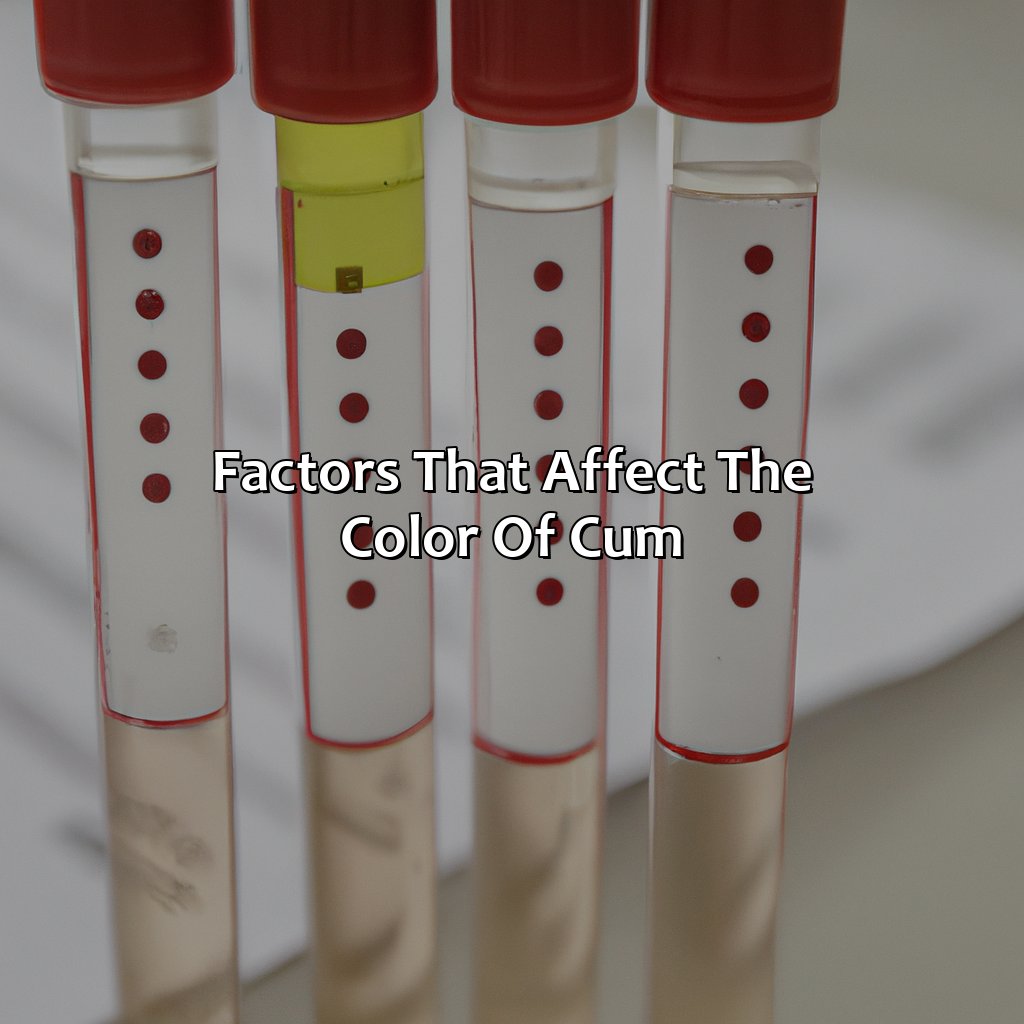##Key Takeaway:
Key Takeaway:
- Asking about someone’s favorite color in Spanish follows a similar structure as asking other questions. To ask “What is your favorite color?”, one would say “¿Cuál es tu color favorito?”
- Understanding the basic structure of the sentence in Spanish can aid in constructing phrases related to color and expressing personal preferences. This includes subject pronouns, the verb “to be,” and adjective agreement.
- Common phrases used to express favorite colors in Spanish include “Mi color favorito es…” and additional phrases to express preferences. Practice exercises such as translating color phrases and speaking and listening exercises can help improve language skills.
How to ask about favorite color in Spanish
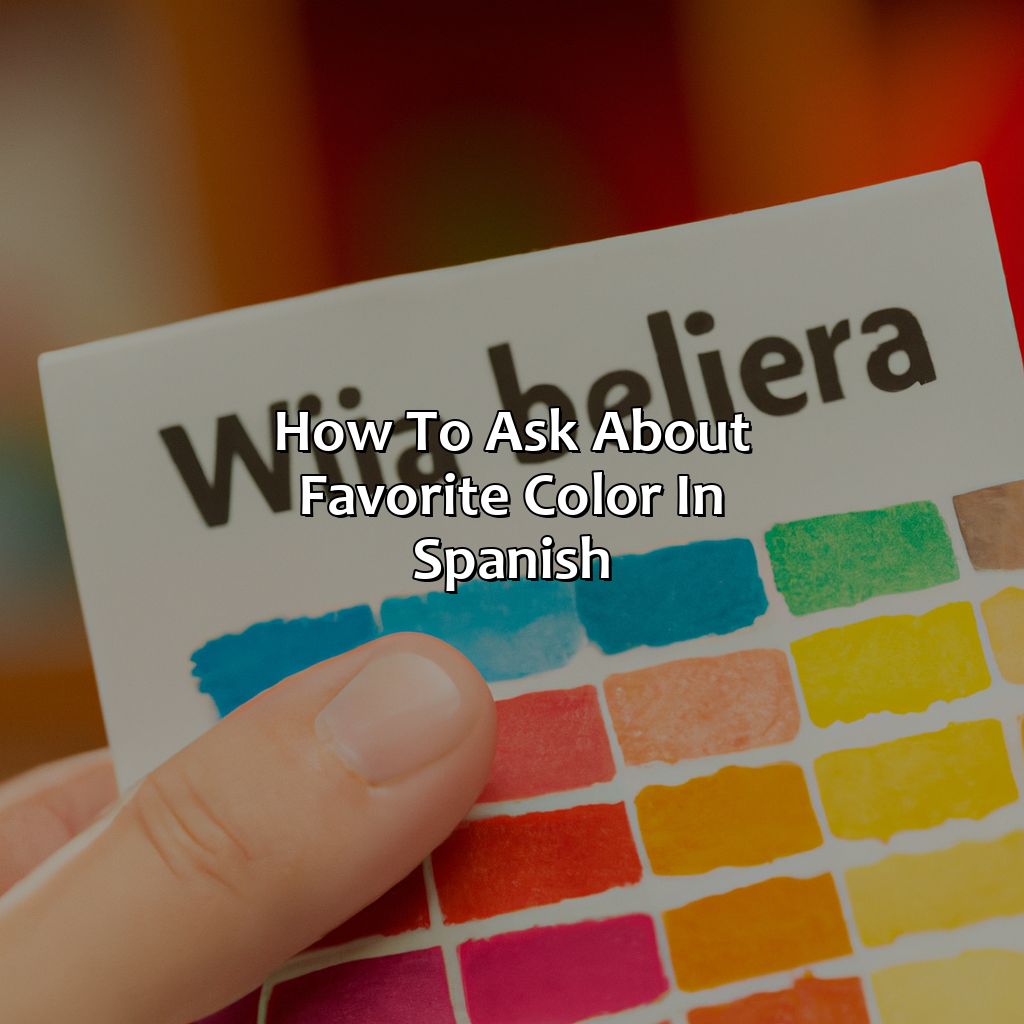
Photo Credits: colorscombo.com by Peter Walker
Asking about one’s favored hue is an ideal ice-breaker in any conversation. When conversing with a Spanish-speaking person, it is appropriate to know the correct way to phrase the question. Here’s a concise guide on how to ask about favorite color in Spanish using the correct question structure.
- Begin with the phrase, “¿Cuál es tu color favorito?” This phrase translates to “What is your favorite color?” in English.
- To make the question more formal, substitute “tu” with “usted.” It would then be, “¿Cuál es su color favorito?” This phrasing shows respect for the person being asked.
- If multiple individuals are being asked the same question, change “tu” or “usted” to “ustedes.” It would then be, “¿Cuál es su color favorito?” This phrasing is appropriate for group occasions.
- Another variation of the question is, “¿Qué color te gusta más?” It translates to “What color do you like the most?” in English.
- An additional variation is to use the phrase, “¿Tienes un color preferido?” It means “Do you have a preferred color?” in English.
- Lastly, adding “¿Por qué?” after all the above questions will make it more interesting to know the reason behind the person’s preferred hue.
Unique details to note when asking about favorite colors in Spanish include using correct verb conjugation and keeping in mind the grammatical gender of colors. For instance, red is “rojo” for masculine gender and “roja” for feminine gender.
Now that you know how to ask about favorite color in Spanish, don’t miss out on making a lasting impression. Start asking about preferred hues and savor conversing in Spanish.
Translation of “What is your favorite color” in Spanish

Photo Credits: colorscombo.com by Christian Gonzalez
When conversing in Spanish, asking someone about their favorite color is a common question. The Spanish translation of “What is your favorite color” is “¿Cuál es tu color favorito?“. It is essential to note that the word “color” in Spanish has the same meaning as in English. Hence, “color favorito” translates to “favorite color” in English.
To express your preference, you can respond with “Mi color favorito es (color)” which translates to “my favorite color is (color)” in English. For example, “Mi color favorito es rojo” means “my favorite color is red.” It is also worth noting that colors in Spanish are gendered. Before a feminine color, we use “la,” and before a masculine color, we use “el.” Additionally, to ask about the favorite color of someone formally, we replace “tu’” by “usted“.
It is important to remember that colors carry cultural significance in different countries and regions. For instance, in Chile, yellow represents happiness, while in Colombia, it represents death. It is crucial to respect and acknowledge cultural differences while conversing in Spanish.
According to Babbel, a language learning platform, Spanish is the second most spoken language worldwide with over 580 million speakers globally. Learning how to say “What is your favorite color” in Spanish is an essential step in conversing fluently in Spanish.
Understanding the structure of the sentence in Spanish
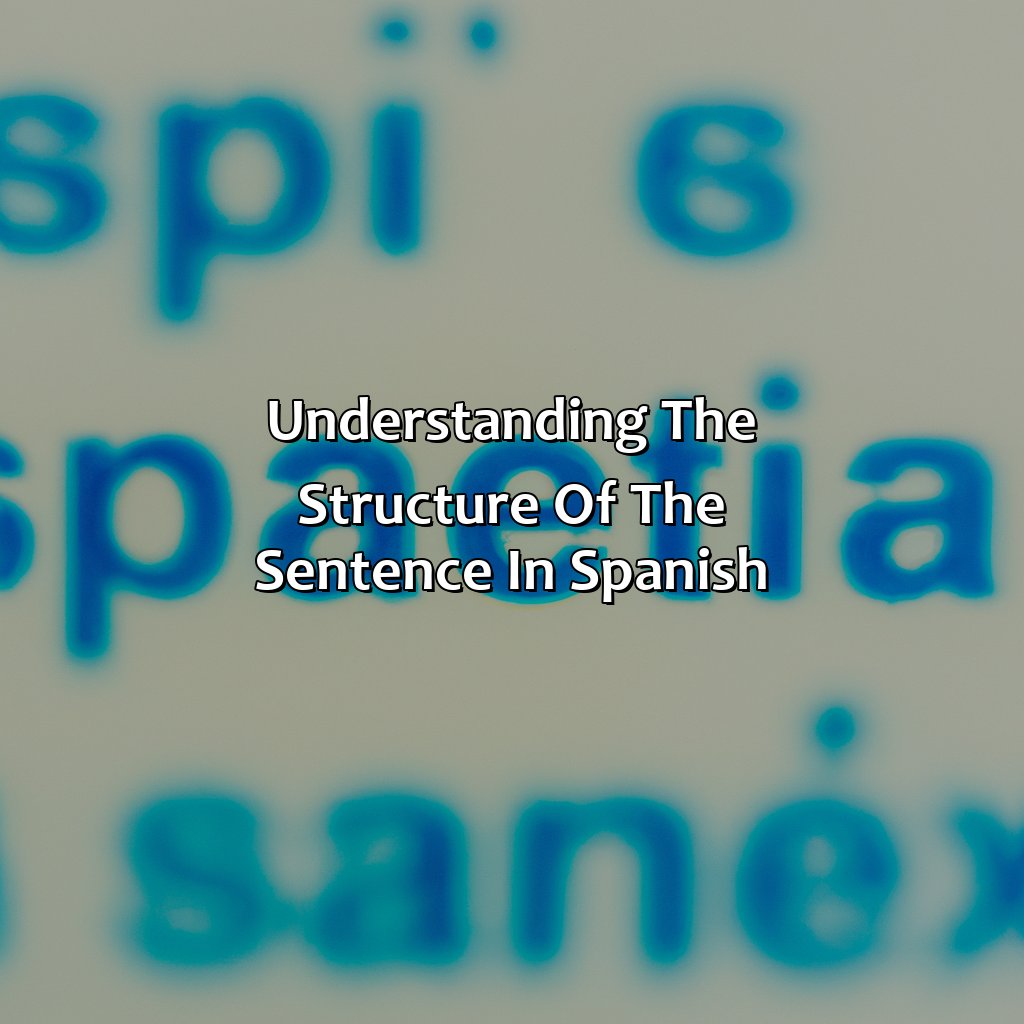
Photo Credits: colorscombo.com by Harold Clark
Want to learn Spanish? Let’s start with the basics! We’ve set up a section to help you understand Spanish sentence structure and grammar. It’s called “Understanding the structure of the sentence in Spanish.” There are three sub-sections:
- Subject pronouns in Spanish
- The verb “to be” in Spanish
- Adjective agreement in Spanish
These concepts are key for forming sentences correctly.
Subject pronouns in Spanish
In Spanish, subject pronouns are used to indicate the subject of a sentence. They are necessary as the verb changes based on who is performing the action. Pronouns in Spanish are yo (I), tú (you), él/ella/usted (he/she/you formal), nosotros/nosotras (we), vosotros/vosotras (you all informal), and ellos/ellas/ustedes (they/you all formal). When speaking or writing in Spanish, it’s essential to use the correct subject pronouns to ensure clarity and accuracy in communication.
The Spanish verb ‘to be‘ may seem confusing at first, but hey, at least it’s not as elusive as Bigfoot.
The verb “to be” in Spanish
The Spanish language includes the Spanish verb “to be” which is fundamental in communicating personal identity and characteristics. It is conjugated differently compared to English, where its forms vary based on person, gender, and number of subjects.
In Spanish, the equivalent to “to be” is “ser” or “estar.” However, each of these verbs has different uses and expressions. For instance, when describing a permanent characteristic or identity, such as nationality or profession, we use “ser,” while we use “estar” for temporary conditions like location.
It is crucial to learn the correct usage of these verbs to convey the intended meaning accurately. Additionally, in Spanish, verb forms match the subject’s number or gender assigned to it. This contributes to clear communication and avoiding ambiguity while speaking.
Pro Tip: Mastering proper usage of “to be” in Spanish requires dedication and practice. Pay attention to context and apply the right verb accordingly.
Matching adjectives with nouns in Spanish is like finding the perfect pair of shoes- it takes time, but once you do, it’s a gorgeous fit.
Adjective agreement in Spanish
In Spanish, adjective agreement is a crucial aspect of constructing grammatically correct sentences. Adjectives must agree in gender and number with the noun they describe to maintain sentence structure and clarity. For example, “red” would be “rojo” when describing a masculine singular noun, but “roja” when referring to a feminine singular noun.
Spanish adjective agreement also applies when using possessive adjectives like “my” or “your.” “Mi color favorito es rojo” (My favorite color is red) shows agreement between the masculine singular noun “color,” and the feminine singular possessive adjective “mi.” Similarly, “Tu color favorito es rojo” (Your favorite color is red) maintains agreement between the masculine singular noun and the feminine singular possessive adjective.
It’s essential to keep in mind that some adjectives can have multiple forms depending on their placement in a sentence or their function within it. This nuance further emphasizes how vital consideration for Spanish adjective agreement is while forming sentences.
Pro Tip: When learning Spanish, make it a habit to always consider nouns’ gender before using adjectives so that there is no confusion regarding adjective agreement in Spanish.
¿Mi color favorito? Depende del día de la semana y de mi estado de ánimo, ¡pero nunca es beige!
Common responses to the question in Spanish
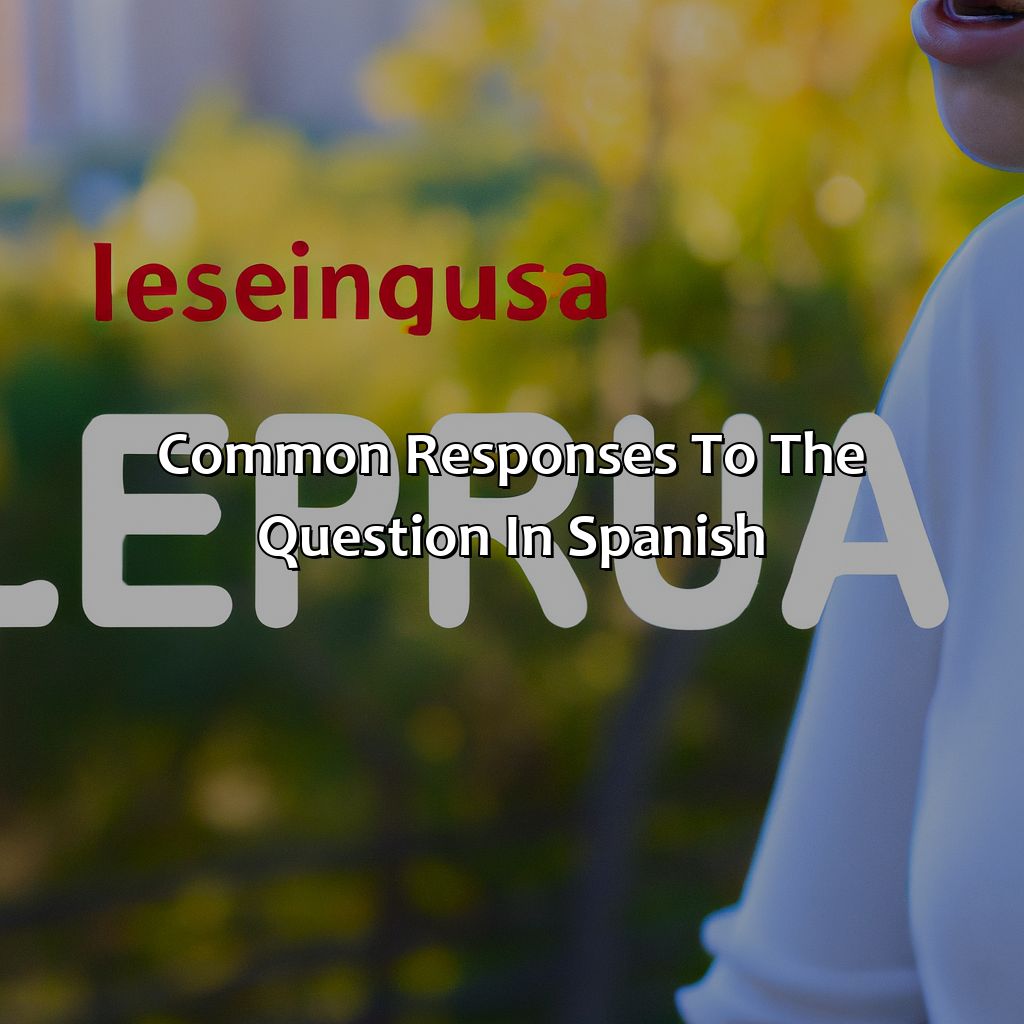
Photo Credits: colorscombo.com by Arthur Hall
To say your favorite color in Spanish, you’ve gotta know the normal phrases. Here, we’ll give some common sayings used for expressing favorite colors. Start with “Mi color favorito es…” This is the usual way. But there are other phrases too. Spanish has various ways to express color preferences. Plus, there are phrases for expressing preferences in Spanish.
Basic response: “Mi color favorito es…”
When asked about their favorite color in Spanish, one common and basic response is “Mi color favorito es…” which translates to “My favorite color is…”. This phrase follows the subject-verb-object (SVO) structure commonly used in Spanish.
It’s important to note that “color” is a masculine noun in Spanish, so when describing it with an adjective, the agreement must be masculine as well. For example, “azul” (blue) would become “azul” again when used to describe “color”.
In addition to the basic response, there are other phrases that can express color preferences in Spanish such as “Me encanta el tono de…” (I love the shade of…) or “Prefiero los colores…”
Practicing translation exercises related to colors and engaging in conversations using color vocabulary can further improve language skills. For instance, translating phrases like “brown eyes” (“ojos marrones”) or describing objects with specific colors can help solidify comprehension and retention of the language.
A personal experience of a friend who struggled to communicate effectively while traveling in Spain due to not understanding basic color phrases highlights the importance of mastering simple concepts like the Spanish phrase for favorite color. In essence, perfecting language skills requires consistent practice and application of learned concepts.
Add some flavor to your language skills with these Spanish phrases for expressing preferences.
Additional phrases to express preferences
To enhance the conversation about color preferences in Spanish, there are several additional phrases that one can use for casual or formal situations. These can include common likes and dislikes, favorites, and general comments.
| Expressing Preferences in Spanish | English Translations |
|---|---|
| No me gusta (color) | I don’t like (color) |
| Me encanta (color) | I love (color) |
| Prefiero (color) | I prefer (color) |
| Estoy enamorado/a de (color) | I am in love with (color) |
In addition to these popular phrases, it is also useful to learn idiomatic expressions like “ver todo de color rosa” which literally translates to “seeing everything in pink” but means to view things optimistically. Another example is “ponerse rojo/a como un tomate” which means to become embarrassed or blush and literally translates as “turning red like a tomato.”
To improve familiarity with Spanish phrases for preferences, practicing speaking and listening exercises can be beneficial. Additionally, translating other related phrases such as “what is your favorite food?” or “what is your least favorite movie?” can further develop language skills.
Interestingly, the history of color preferences dates back centuries where colors were associated with symbolic meanings across different cultures. In ancient Greece, for example, white was considered a symbol of purity while black represented death and mourning. In modern times, color perceptions and preferences vary widely but still hold significant emotional associations.
Expressing preferences in Spanish can open up interesting cultural conversations and deeper connections with Spanish speakers around the world.
Get ready to hablar español like a pro with these practice exercises that’ll make you the envy of all your amigos.
Practice exercises to improve Spanish language skills

Photo Credits: colorscombo.com by Lawrence Perez
To get better at Spanish, practice! Translate color phrases to learn Spanish color vocab. This will help you when you do speaking and listening exercises. They will improve your ability to communicate in Spanish.
Translating other phrases related to color in Spanish
Expanding on the topic of Spanish color vocabulary, there are various phrases related to colors that can be translated into Spanish.
- Translating color phrases relating to size and texture: For instance, translating “pink polka-dotted dress” in Spanish would require knowledge of the Spanish words for pink, polka dots, and dress.
- Translating color phrases relating to emotions: Colors can evoke certain moods or feelings, such as “blue Monday” or “green with envy.” Understanding these associations is helpful in translating them accurately into Spanish.
- Translating color phrases in idiomatic expressions: Many idiomatic expressions in English use colors as metaphors for something else. For example, “black sheep” refers to a person who brings shame or dishonor to their family. Knowing how to translate these expressions is crucial for bilingual communication.
In addition, it is important to note that some colors have gender agreement in Spanish. For instance, rosa (pink) is feminine while rojo (red) is masculine.
Understanding these nuances can help learners speak more naturally and confidently in Spanish conversations.
One interesting fact about Spanish color vocabulary is that some shades have unique names not shared by any other language. For example, celeste refers to a pale blue shade while morado refers specifically to a deep purple color.
Improve your Spanish conversation skills with fun speaking and listening exercises, because practice makes perfect.
Speaking and listening exercises to practice conversation skills
To enhance your Spanish conversation skills, it is essential to practice speaking and listening exercises regularly. These exercises will improve your pronunciation, grammar and vocabulary while gaining confidence in communicating with native speakers.
- Converse in Spanish during social events or meetings with friends who speak the language.
- Join online forums or groups for language learners where you can practice speaking and receive constructive feedback.
- Listen to audio recordings of spoken Spanish to improve your comprehension skills and pick up natural phrasing through repetition.
- Watch movies, TV shows or listen to podcasts in Spanish with subtitles to comprehend dialogues better and learn new words simultaneously.
- Take part in one-on-one conversation classes with certified teachers either online or in-person coaching, for targeted improvement under professional guidance.
In addition to traditional methods, language exchange programs are another way of improving conversation proficiency. Language immersion retreats are also increasing popularity among aspiring bilinguals.
For optimal learning progress, engage actively using these conversational exercises consistently in a structured manner without limitations. Improved speaking ability helps induce greater accuracy in listening comprehension.
To conclude, practicing speaking exercises, listening exercises and engaging through conversations regularly can exponentially increase skillset growth for those looking to improve their Spanish communication abilities.
Five Facts About How To Say “What Is Your Favorite Color?” In Spanish:
- ✅ “What Is Your Favorite Color?” in Spanish can be said as “¿Cuál es tu color favorito?” (Source: FluentU)
- ✅ Spanish, like English, varies by region, so there may be slight variations in the way this phrase is said depending on where you are. (Source: SpanishDict)
- ✅ Color is pronounced “color” in Spanish, and the accent is on the first syllable. (Source: ThoughtCo)
- ✅ Telling someone your favorite color in Spanish is a great way to practice basic conversational skills. (Source: My Daily Spanish)
- ✅ Spanish is the second most spoken language in the world, with over 460 million speakers worldwide, making it a valuable language to learn. (Source: Ethnologue)
FAQs about How Do You Say What Is Your Favorite Color In Spanish
How do you say “What is your favorite color?” in Spanish?
The phrase “What is your favorite color?” in Spanish is “¿Cuál es tu color favorito?”
What are some other ways to ask about someone’s favorite color in Spanish?
Some other ways to ask about someone’s favorite color in Spanish include:
- ¿Cuál color te gusta más? (Which color do you like the most?)
- ¿Qué color te parece más bonito? (Which color do you think is the most beautiful?)
How can I respond to the question “¿Cuál es tu color favorito?”
You can respond to this question with:
- Mi color favorito es… (My favorite color is…)
- Me gusta mucho el color… (I really like the color…)
- No tengo un color favorito en particular. (I don’t have a particular favorite color.)
What are the most common favorite colors in Spanish-speaking countries?
The most common favorite colors in Spanish-speaking countries are generally the same as in other countries: blue, green, red, and yellow. However, cultural influences may lead to different preferences in certain regions or among certain groups of people.
What is the word for “color” in Spanish?
The word for “color” in Spanish is “color.” It is spelled and pronounced the same as in English.
Can you recommend any Spanish-language resources for learning more about colors?
Yes, there are many resources available online for learning more about colors in Spanish. Some helpful ones include:
- SpanishDict.com’s colorful guide to Spanish colors: https://www.spanishdict.com/guide/colors-in-spanish
- FluentU’s video lesson on colors in Spanish: https://www.fluentu.com/blog/spanish/spanish-colors/
- BBC’s interactive game for learning colors in Spanish: http://www.bbc.co.uk/schools/primarylanguages/spanish/cultures/colors/
